The proposed host cities include Riyadh, Jeddah, Al Khobar, Abha, and the yet-unbuilt Neom, a 170-kilometer-long linear city proposed to be built on the Red Sea coast. Additionally, the plan involves 134 training sites across the country, with 73 newly built facilities.
FIFA has released the official Saudi Arabia Bid Book, outlining the vision and strategy for hosting the global event, as well as the 15 stadiums set to host the games. As the only bidder for the World Cup, Saudi Arabia is expected to be officially confirmed as the host of the 2034 event in December by FIFA.
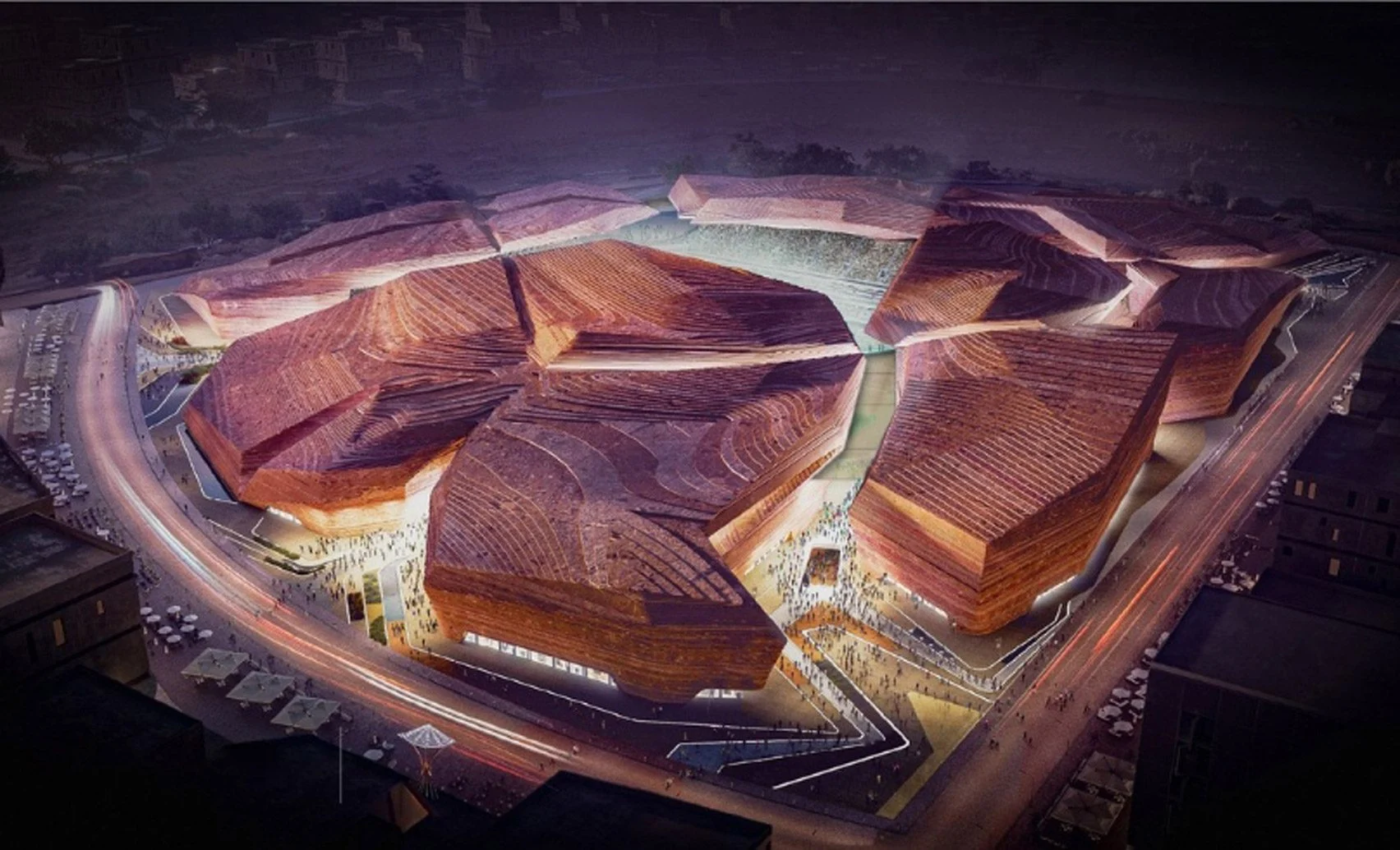
1. New Murabba Stadium / unknown architect (Riyadh)
With its exterior reminiscent of acacia bark, the New Murabba Stadium will be surrounded by numerous rock-like formations separated by canyons.
"Its design replicates the layered, overlapping planes and look of the flat texture of native acacia bark," according to the bid document.
The 45,000-seat stadium will form part of a city-centre development, Murabba, being created in the northwest of Riyadh. The development will also include a 400m tall cube-shaped skyscraper called Mukaab.
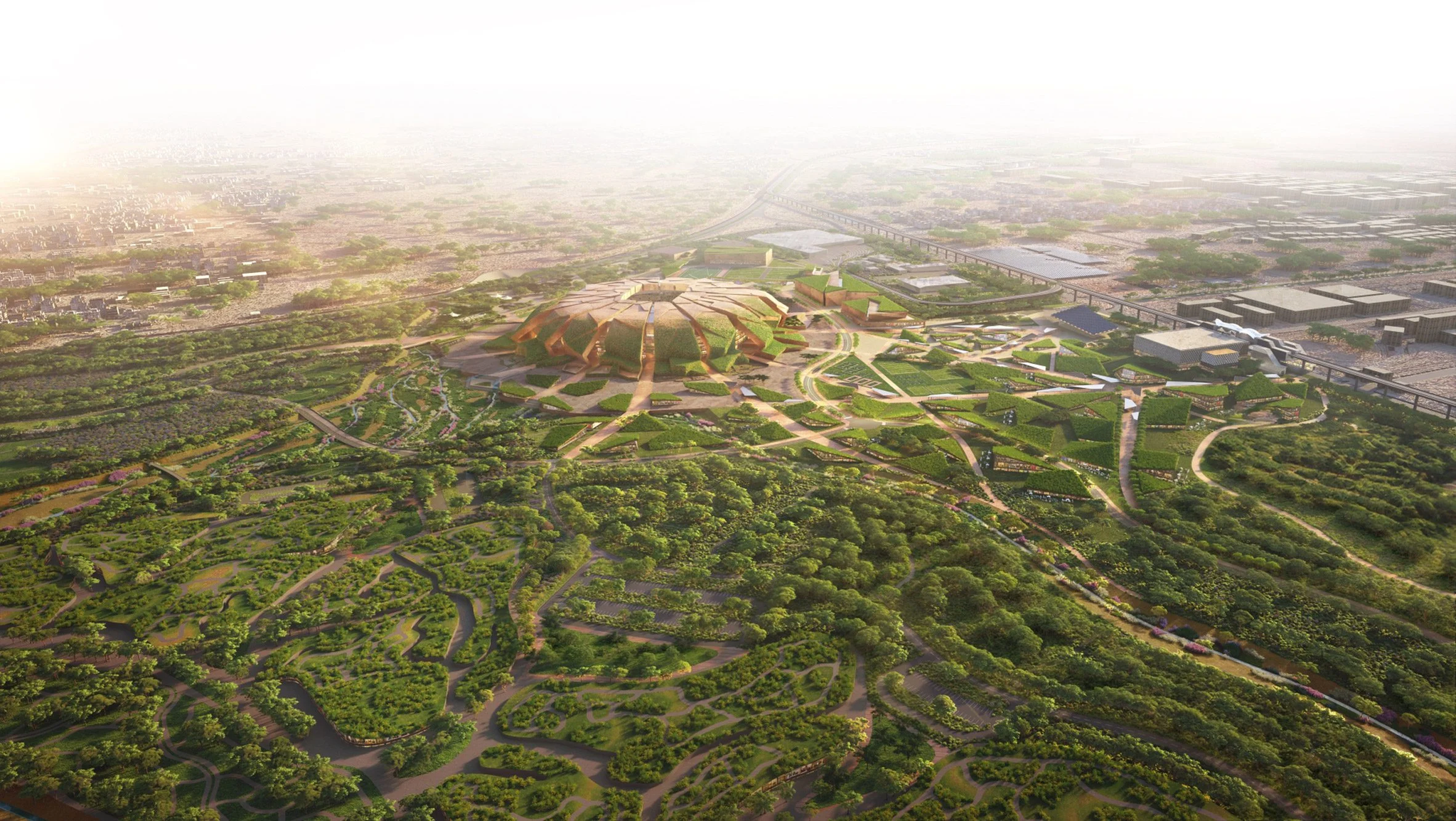
2. King Salman International Stadium / Populous (Riyadh)
The King Salman International Stadium which is set to host the World Cup final will be the country's largest stadium when completed.
Designed by architecture studio Populous, which is creating several venues for the tournament, the stadium in Riyadh will have a capacity of 92,000. Its design is based on the aesthetics of the mountains, with shaped panels enclosing the structure.
"The stadium will be integrated into its topography, with the terrain and natural environment forming part of the stadium roof," the official statement said.
"In addition to its aesthetic appeal, this design will provide effective shading and ventilation adapted to the desert climate."
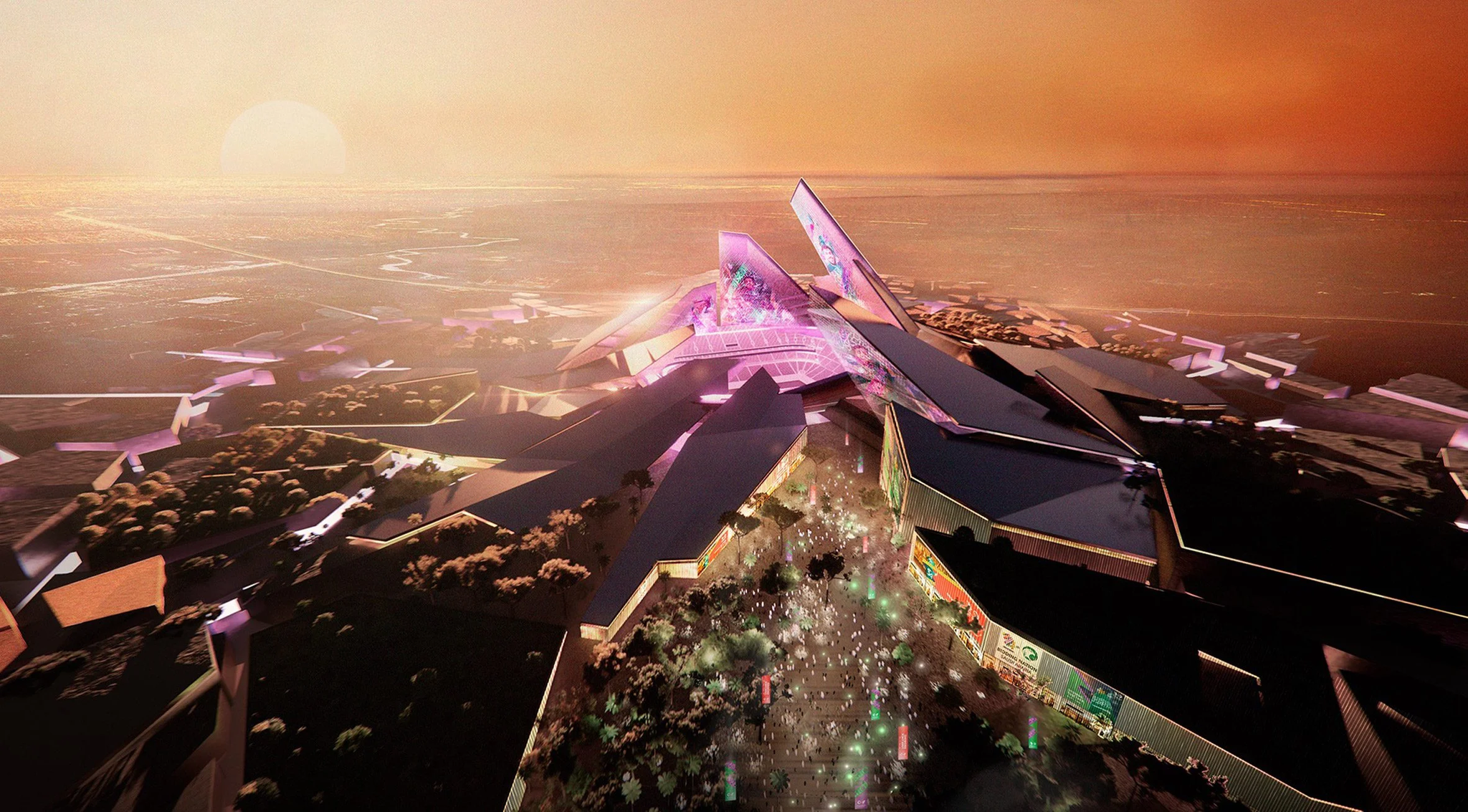
3. ROSHN Stadium / unknown architect (Riyadh)
Designed to resemble several crystalline shards rising into the air, the Roshn Stadium will be built in the south of Riyadh as part of a wider residential neighborhood and set in a central square.
"The stadium is designed as a dynamic part of the urban fabric, encouraging the community to walk around and through the facility," the bid said.
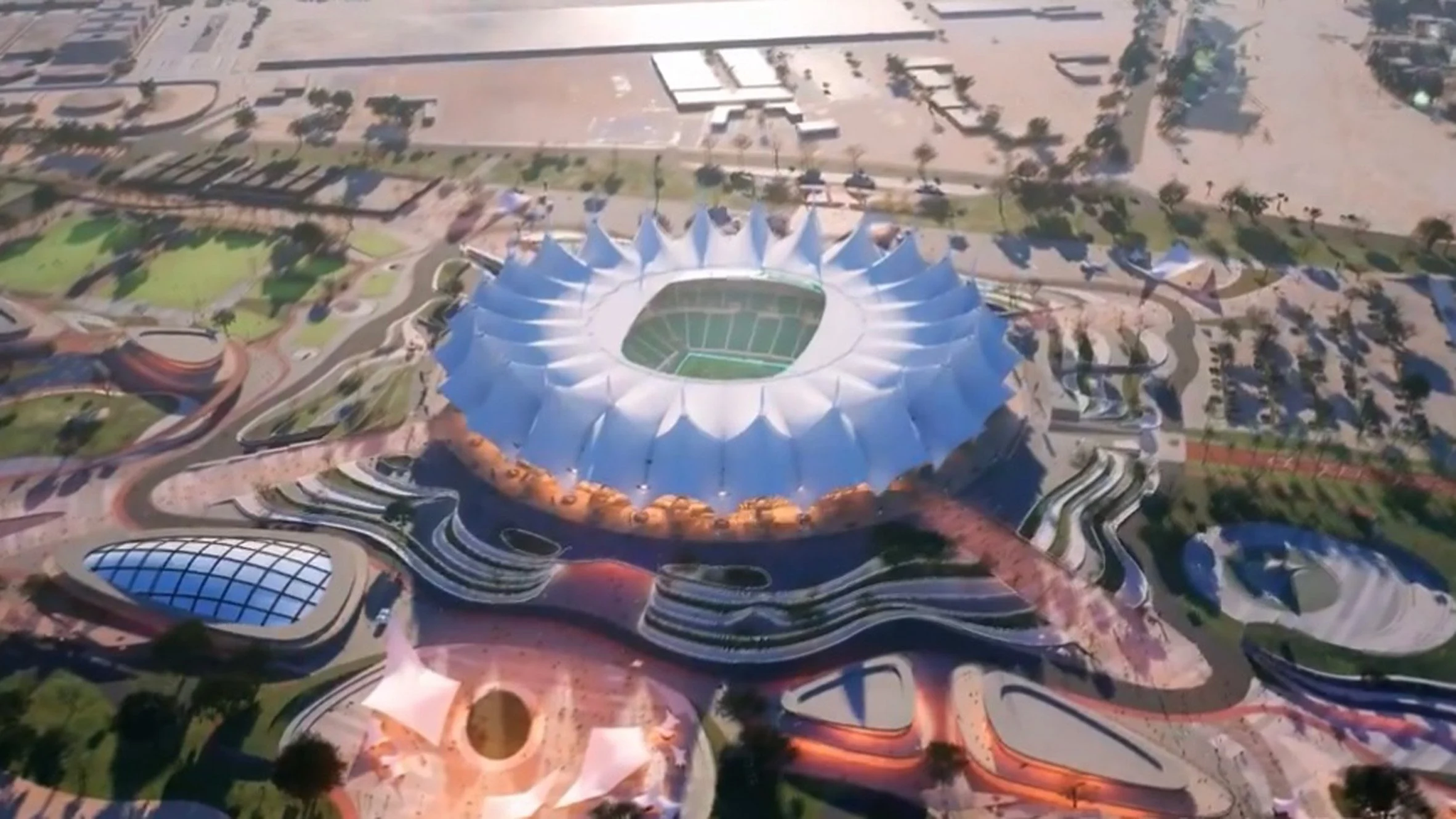
4. King Fahd Sports City Stadium / Ian Fraser, John Roberts, Michael K.C. Cheah, and Partners (Riyadh)
The King Fahd Sports City Stadium, which has been in operation since 1987, is covered with a distinctive fabric roof supported by a series of 24 masts that are each 58 meters high.
The stadium, located in eastern Riyadh, is currently being renovated by Populous to increase its capacity from 58,000 to 70,000.
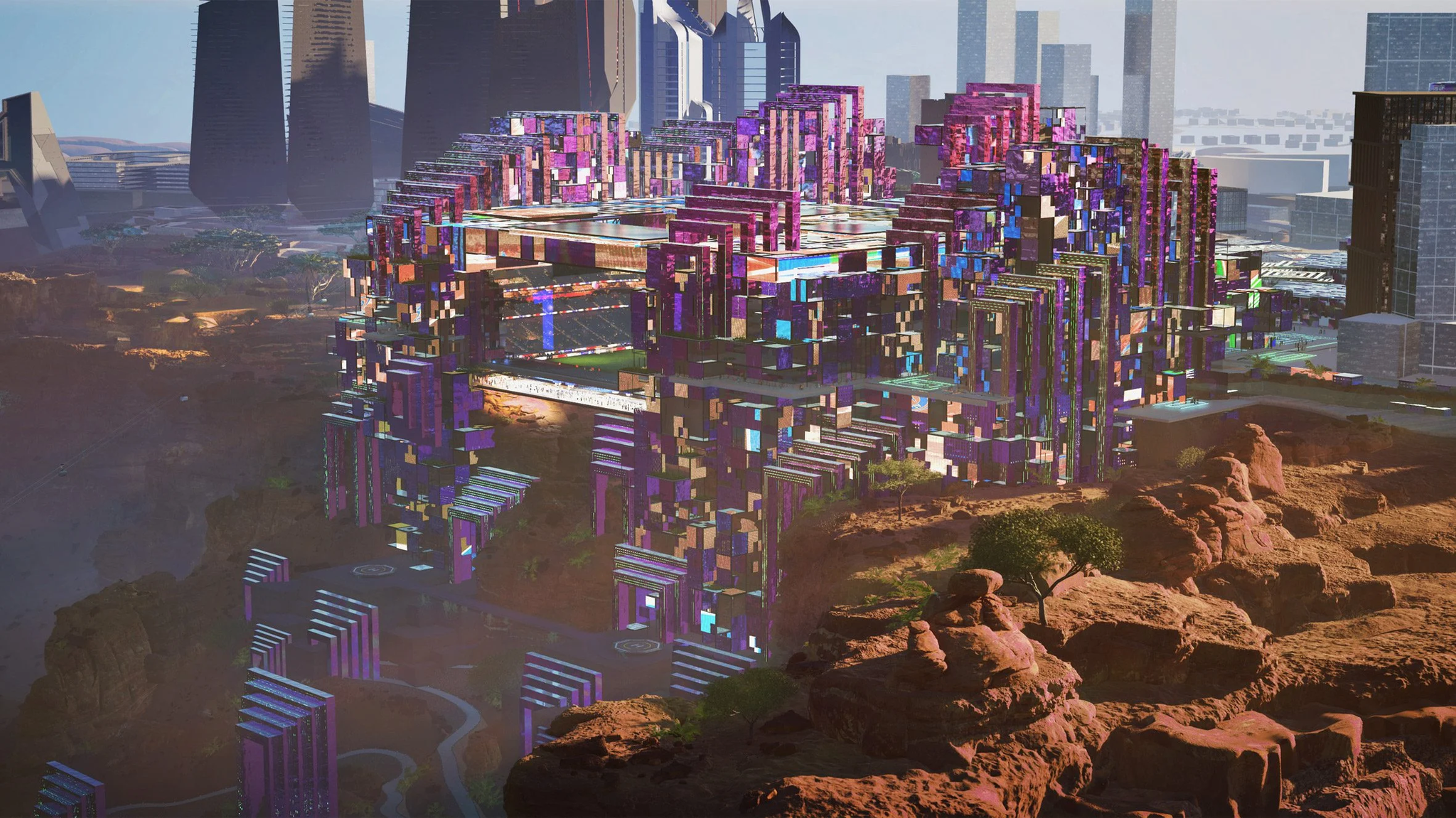
5. Prince Mohammed bin Salman Stadium / Populous (Riyadh)
Named after Mohammed bin Salman, the Crown Prince of Saudi Arabia, the stadium is designed as part of the Qiddiya entertainment district, 30 kilometers from Riyadh.
The stadium will be perched on the edge of a cliff and will have stands on three sides with a large, retractable LED wall occupying the other side. The building will also include an Olympic Museum.
"The stadium has been designed to optimize the spectator experience, with a unique three-aspect layout that allows for stunning views towards the Tuwaiq Rocks," the official bid said.
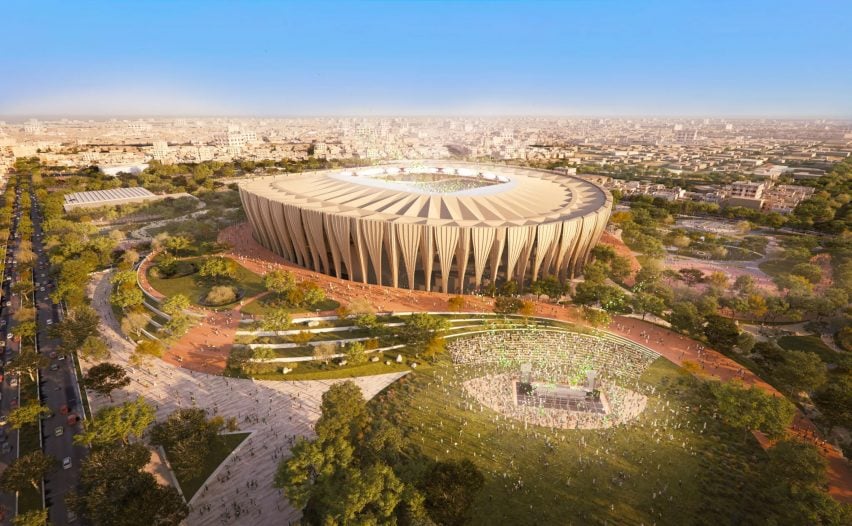
6. Prince Faisal bin Fahad Sports City Stadium / unknown architect (Riyadh)
The Prince Faisal bin Fahd Sports City Stadium is currently under construction in the east of the city and will be inspired by traditional architectural motifs from the central region of the country.
"The stadium design draws inspiration from the 'culturally shaped modernism' principles of Salmani architecture," the bid document said.
The stadium will be built with locally sourced materials and will use energy efficient systems, including extensive solar panels on the roof."
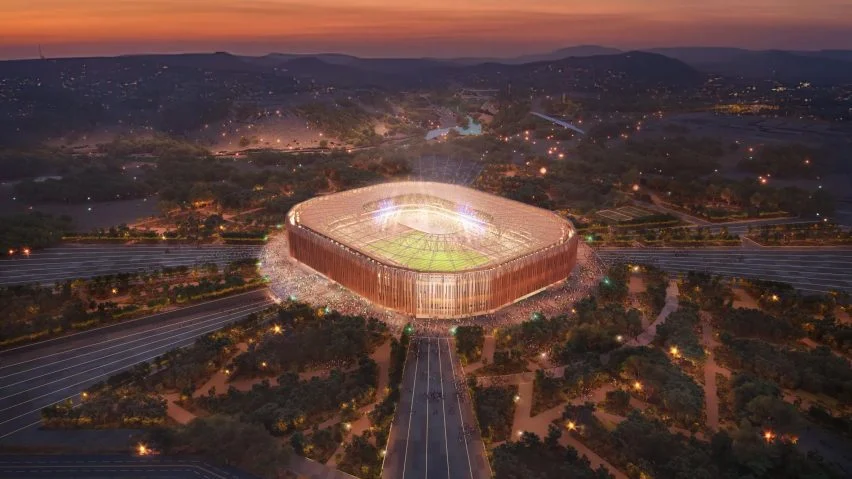
7. South Riyadh Stadium / unknown architect (Riyadh)
Another stadium based on the "principles of Salmani architecture", the South Riyadh Stadium will be located in the south of the capital – as the name suggests. It will be wrapped in several reddish-brown vertical fins and covered with a transparent roof.
"The facade combines modernism with the rich architectural language and material palette of the area," the offering said.
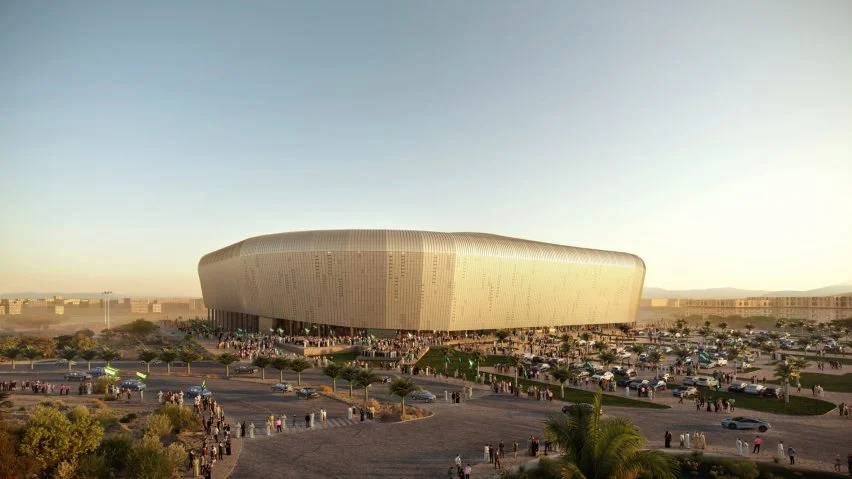
8. King Saud University Stadium / Michael KC Cheah (Riyadh)
One of two existing stadiums that will be temporarily expanded for the World Cup, King Saud University Stadium will have a capacity of 46,000 during the tournament, before reducing to 33,000 after the event.
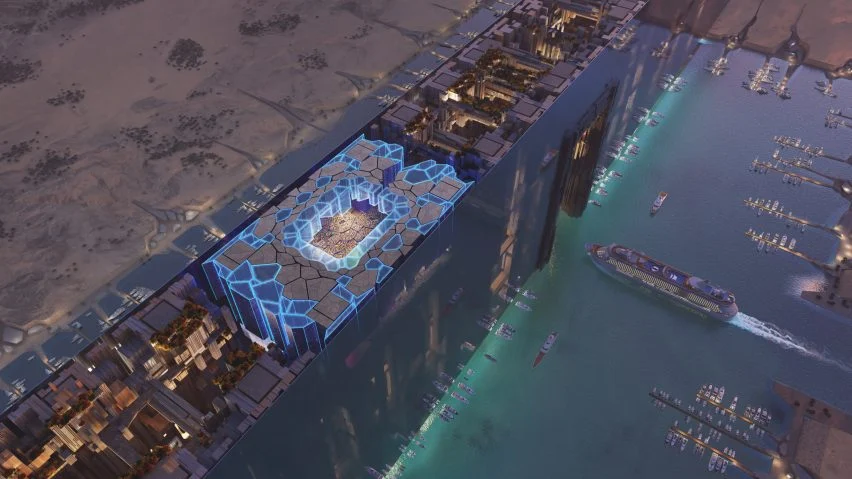
9. NEOM Stadium / unknown architect (NEOM)
Described as "the most unique stadium in the world", Neom Stadium will be integrated into Mega City The Line, which is under construction in the north-west of the country as part of Neom.
"With a pitch that sits more than 350 meters above the ground, stunning views and a roof created by the city itself, the stadium will be an experience like no other," according to the offer.
It is worth noting that, according to Dezeen, studio BIG is responsible for the design of the Neom Stadium, a rumor that has not been confirmed by either Saudi Arabia or the Dutch studio.
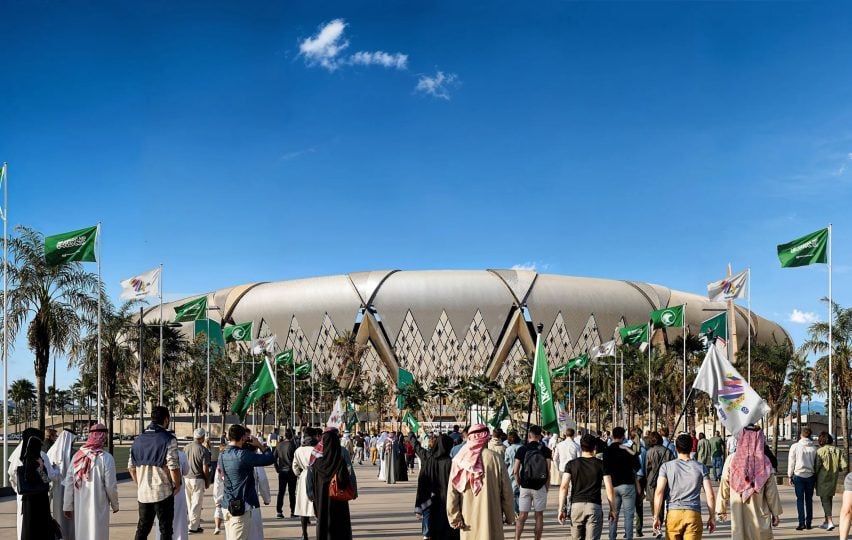
10. King Abdullah Sports City Stadium / Arup (Jeddah)
The 62,000-capacity King Abdullah Sports City Stadium, which opened in 2014, was designed by Arup and will be refurbished ahead of the World Cup.
"Saudi Arabia's King Abdullah Sports City Stadium is an elegant, respectful and flexible complex that combines traditional Islamic architecture with innovative design to form a highly functional, sustainable and versatile building," said Arup.
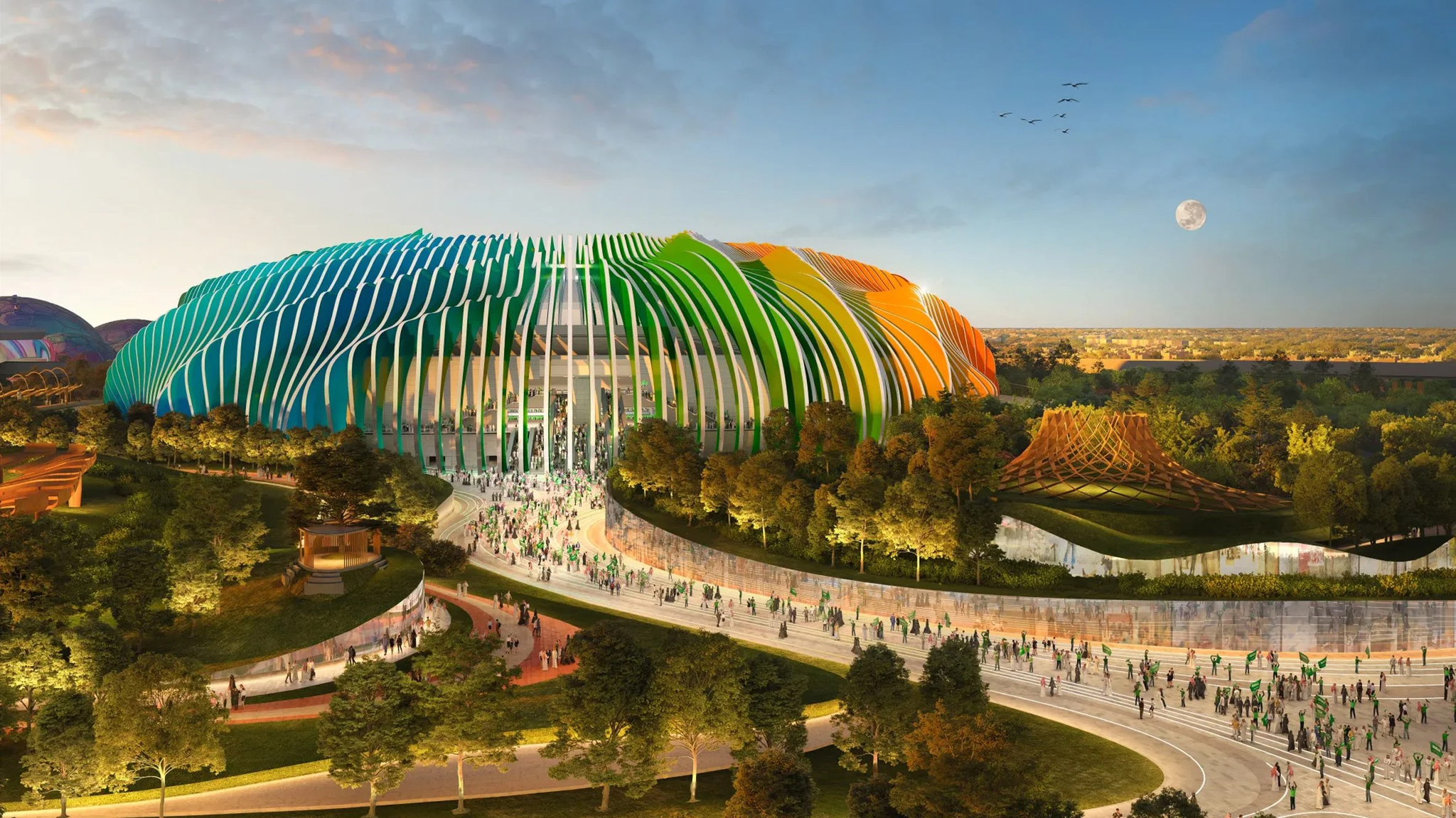
11. Qiddiya Coast Stadium / unknown architect (Jeddah)
One of the most colorful stadiums being built for the World Cup, the Qiddiya Coast Stadium is being built 45 kilometers north of Jeddah. It will be surrounded by several fins designed to evoke the idea of a wave of spectators (Mexican wave).
"It was designed as a physical representation of the living relationship between people and water, energy and matter," the offering said.
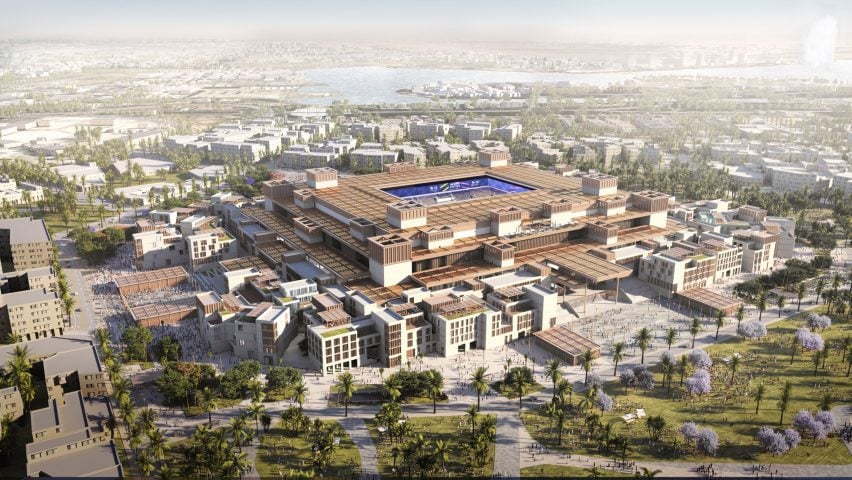
12. Jeddah Central Development Stadium / gmp Architecten and Khatib & Alami (Jeddah)
The 45,000-seat stadium currently under construction as one of the centerpieces of the Jeddah Central giga project was designed by German studio GMP Architecten.
The stadium will be completely surrounded by buildings that make it look like a mass of historical structures.
"It echoes the traditional architecture of Jeddah's historic Al Balad district while embracing technological advances and innovative building design," the bid document states.
The wider development will include 17,000 homes as well as an arts center designed by Heatherwick Studio, an opera house designed by Danish studio Henning Larsen and an oceanarium by American studio SOM.
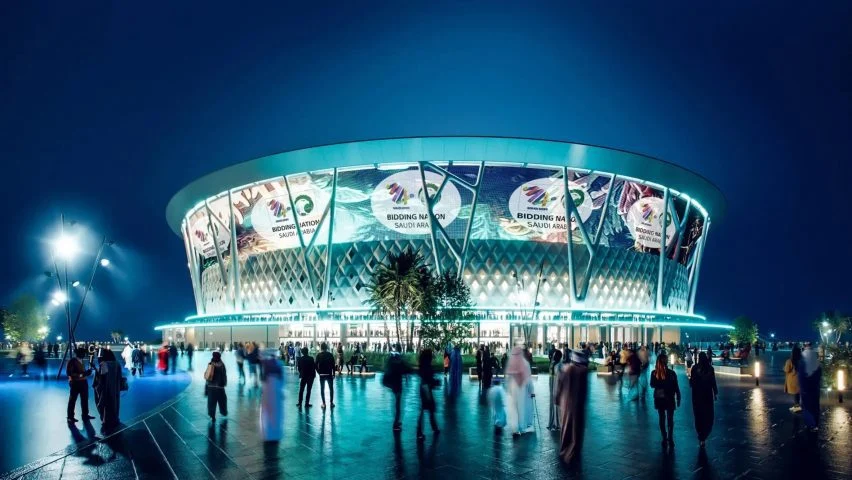
13. King Abdullah Economic City Stadium / unknown architect (Jeddah)
Located 80 kilometers from Jeddah, the King Abdullah Economic City Stadium will form part of a planned new city on the Red Sea coast.
The drum-shaped stadium will have a capacity of 45,000 people.
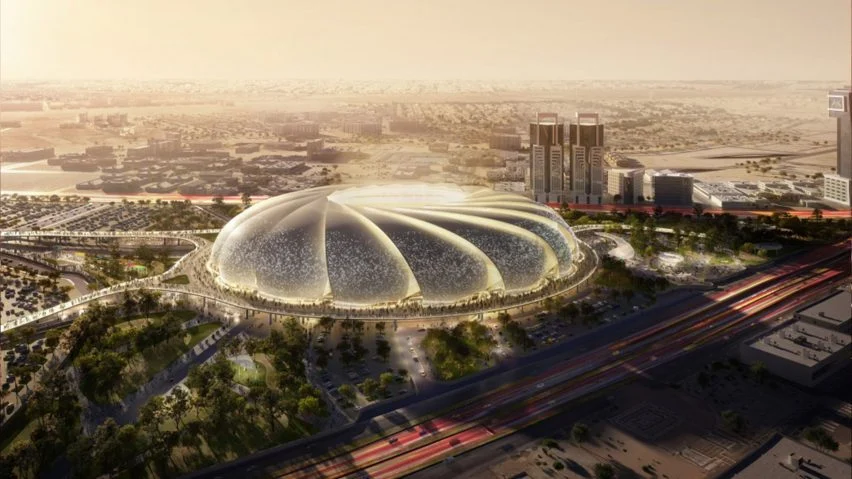
14. Aramco Stadium Foster + Partners and Populous
Designed by British studio Foster + Partners, the Aramco Stadium, which will be delivered by Populous, is under construction in the city of Al Khobar on the country's east coast.
Inspired by the eddies found off the coast of Saudi Arabia, the 47,000-seat stadium will be covered in a series of sail-like forms. It is scheduled to be completed in 2026 and used for the 2027 Asian Cup.
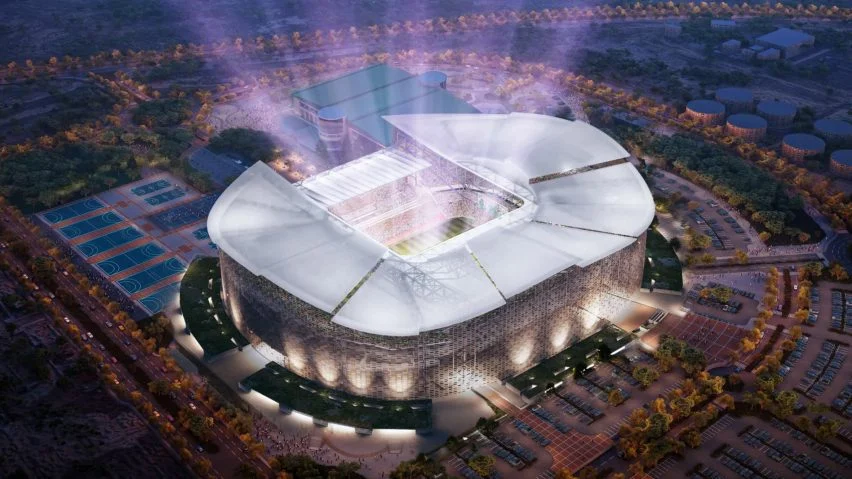
15. King Khalid University Stadium / unknown architect (Abha)
Located in the southwestern city of Abha, the King Khalid University Stadium is the second existing stadium to be expanded for the tournament.
Originally opened in 1987, it currently has a capacity of 12,000, which will increase to 45,000 during the World Cup.
source: Dezeen














